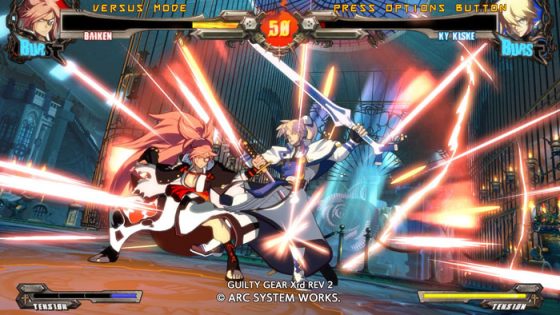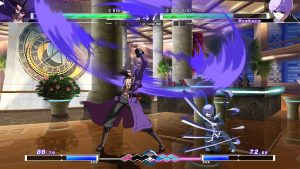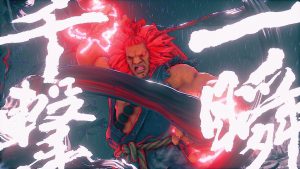
The current state of fighting games as a whole is perhaps at its very best, ever since the resurgence that took place back when Street Fighter IV released back in 2008. Many titles have come and gone but the community continues to thrive in more ways than one, with games becoming more accessible to a broader audience, opening up more doors for casual players to experience. However, while new fighting game titles continue to enter the marketplace there’s perhaps one particular area of the scene that just never seemed to keep with the trends and that’s the netcode.
Netcode in fighting games, ever since the early days, have always been lackluster, with only a very small handful of titles really demonstrating how capable working netcode looks like. The unfortunate part about this is that those very titles don’t often stay around too long, when compared to the more notable titles that many flock after. Which brings up the question, why is the netcode terrible in fighting games? Why must the most integral aspect of a fighting game be so horrendously designed that many of our favorite titles become nothing more than an offline showcase? This is a burning question that we hope some developers will soon answer but for now, let’s dive into the reasons why netcode is so imperative for fighting games, and why we are in urgent need of an upgrade.
It’s a Multiplayer Experience
Sure, offline events such as tournaments serve as a stable and secure unit for fighting games to thrive. These events likely provide accommodations for professional players and casual players alike, while encouraging camaraderie and social activity. However, events such as EVO aren’t always accessible for people, especially those who have to make the trek from one part of the globe to the other, knowing that a lot is on the line financially.
By having the option of online gaming, it opens up a new door of opportunity for players to train and play against others who they’d otherwise not have a chance to, due to distance. Another benefit that goes back to the aforementioned paragraph is that it’s a multiplayer experience, granting players access to lobby systems, and customizable features to allow for seamless gameplay. Sadly, seamless doesn’t always fit the bill and a vast majority of the time, unless you’re within close proximity of players, the online experience isn’t very redeeming at all. Major companies have yet to find a solution, in spite of the community being around for more than a decade, and smaller companies taking advantage of their online engineering prowess. It’s sad to say that in 2020 fighting games continue to reach the netcode final boss only to get defeated by it entirely.
Netcode is the Savior of Fighting Games
Let’s face it, without netcode implementation we wouldn’t have the chance to fight players from all around the world. We need netcode to maintain balance within the community because it’s what holds it together, at least in this day and age. Games like Granblue Fantasy Versus, and Dragon Ball FighterZ are incredibly popular titles in the offline tournament scene, but continue to suffer severely when players try logging in for a little extra battle experience. Of course there are other factors that could potentially interfere with netcode such as ones IP, and location, but big companies should already take this into consideration because by this point it’s inexcusable.
Arc System Works has a magnificent library of fighters but many of them succumb to the netcode problems, along with Capcom’s Street Fighter V. Many improvements have certainly been made and admittedly, in the case of Granblue Fantasy Versus, the netcode is certainly satisfactory. Not where we’d like it to be but it still allows us for some ass kicking when the time comes. Killer Instinct, hands down our favorite fighter of the decade, is one of the rare gems that took the fighting game netcode to an entirely different level.
The irony of KI is that, in spite of it having arguably THE BEST netcode of any fighting game on the market, even up until today, it never managed to reach the upper echelons of success that titles like Street Fighter V have done. Now mind you, Killer Instinct came out back in 2013 and it’s now 2020 where the game still feels completely smooth due to a team dedicated to make fighting games great (Thanks Iron Galaxy and Double Helix).
We live in Japan and can still fight players who live in NorCal with very little input delay, or even as far as EU. The point here is that by this point in time, fighting games should not have to suffer the Great Depression pertaining to netcode. By now, we should have all preparations readily available for players to take advantage of and allow for continuous satisfying experiences with players both locally and abroad. Capcom and these other major conglomerates need to shape up and do better, instead of being embarrassed by community members who seem to make better coding than the companies themselves.

Final Thoughts
With the high expectation of the new generation consoles PS5 and XBOX, we as fighting game enthusiasts can only hope that the netcode issue is dealt with so that the next generation of fighting games can shine brightly for the future. Good news is on the horizon however, as just recently, Arc System Works announced that Guilty Gear Strive may came with the glorious Rollback Netcode that for many years, fans of the FGC have been begging for. There surely is light at the end of the murky tunnel and with that, we can only pray that other titles receive the same treatment. We'll be keeping a close eye on that for sure.
Recommended Post
Under Night In-Birth Exe:Late[cl-r] - PlayStation 4 Review
Recommended Post




